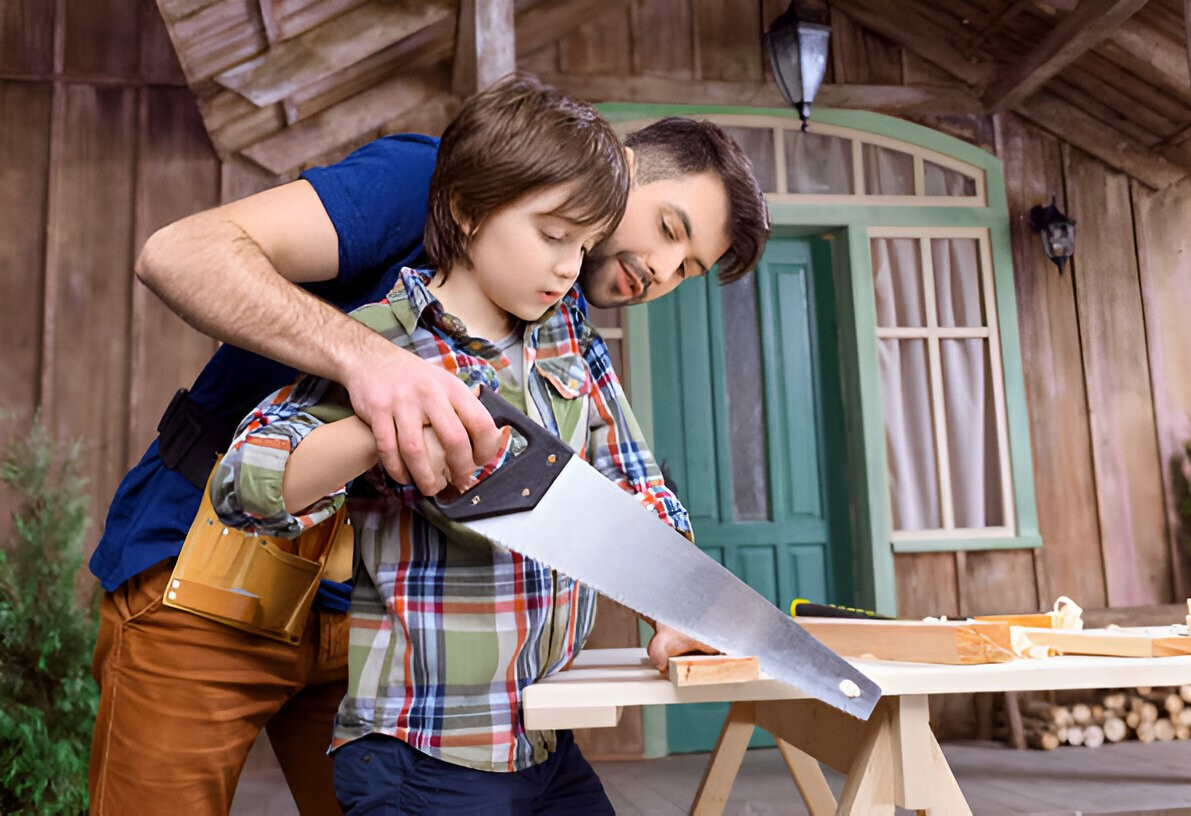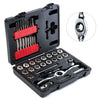
From Play to Practice: Transitioning from Toy to Real Tool Kits
In the journey of childhood development, the transition from playthings to practical tools marks a significant milestone. As children grow, their play evolves to mimic the actions and responsibilities of adults. The shift from kids tool kits to real tools not only signifies a step towards maturity but also opens up a world of learning and skill-building opportunities.
Understanding how to navigate this transition thoughtfully and safely is essential for fostering a child's independence and competence. Join us as we delve into the realm of transitioning from toy to real tool kits, empowering children to learn, grow, and thrive.
Understanding the Importance of the Transition: Toy to Real Tools
As children engage in imaginative play with toy tool kits, they begin to develop an understanding of basic tools and their functions. However, there comes a point where the transition to real tools becomes crucial for their growth and development. Understanding the importance of this transition is essential for parents and caregivers.
One key aspect of this transition is the shift from symbolic play to practical application. Toy tool kits often have simplified, plastic versions of tools that may not accurately represent the real thing. Moving to real tools allows children to experience the weight, texture, and functionality of actual tools, enhancing their understanding of how they work in the real world.
Another significant factor to consider is the development of fine motor skills and hand-eye coordination. Real tools require more precision and control compared to toy versions. By transitioning to real tools, children can refine their motor skills, improving their dexterity and ability to manipulate objects effectively.
Moreover, the transition from toy to real tools promotes a sense of responsibility and independence. Real tools carry a level of seriousness and require proper handling and care. By entrusting children with real tools, they learn to take ownership of their actions, understand the consequences of misuse, and develop a sense of pride in accomplishing tasks with real tools.
Lastly, the transition to real tools provides an opportunity for children to learn practical life skills. As they engage in tasks such as fixing, building, or creating, they gain valuable knowledge about problem-solving, critical thinking, and perseverance. These skills not only contribute to their personal development but also prepare them for future challenges and responsibilities.
Understanding the importance of transitioning from toy to real tool kits sets the foundation for a successful and enriching learning experience for children. With this understanding in mind, let's explore the considerations when choosing appropriate real tools in the next section.
Choosing Appropriate Real Tools After Toys
When it comes to choosing real tools for children after they have outgrown their toy tool kits, several factors need to be considered. Selecting the right tools is crucial for ensuring their safety, promoting skill development, and fostering a positive learning experience. In this section, we will explore why the right tools matter, the considerations to keep in mind when selecting real tools, and the process of transitioning from toy to real tools.
Why the Right Tools Matter
Choosing the appropriate tools for children is essential for their overall safety and well-being. Real tools are designed with specific purposes and may have sharp edges, points, or other potential hazards. It is crucial to select tools that are age-appropriate, durable, and designed with safety features such as rounded edges or non-slip handles.
Additionally, the right tools can enhance a child's learning experience. Tools that closely resemble the real thing allow children to better understand the functions and applications of various tools. They can develop a deeper knowledge and appreciation for the tools they are using, leading to more meaningful learning experiences.
Considerations When Selecting Real Tools
-
Age-appropriateness: Consider the age and developmental stage of the child when selecting tools. Younger children may require tools that are smaller in size and simpler in design, while older children can handle more complex tools.
-
Quality and durability: Invest in high-quality tools that are built to withstand the rigors of use. Look for tools made from durable materials that can withstand repeated use without breaking or easily wearing out.
-
Safety features: Prioritize tools with safety features such as rounded edges, non-slip grips, and protective mechanisms to minimize the risk of accidents or injuries.
-
Tool variety: Introduce a variety of tools to provide a well-rounded learning experience. Include tools from different categories such as woodworking, gardening, or mechanics to expose children to different skill sets and interests.
-
Consider individual interests and abilities: Take into account the specific interests and abilities of the child. If they have a particular interest in woodworking, for example, focus on selecting tools related to that area.
Related Article: Kids’ Tool Kit Accessories: What Should Be Inside
The Transition Process
The transition from toy to real tools should be a gradual and guided process. It is important to assess the child's readiness, provide appropriate supervision, and offer guidance on how to use each tool safely and effectively. The transition process may involve starting with simpler tools and gradually introducing more complex ones as the child becomes more comfortable and skilled.
By carefully considering these factors when choosing real tools for children, we can ensure their safety, promote skill development, and provide a positive learning experience. In the next section, we will delve into how to safely introduce real tools to children, ensuring a smooth and successful transition.
How to Safely Introduce Real Tools
Introducing real tools to children requires careful consideration and a focus on safety. Ensuring a safe and positive experience is essential for building confidence, promoting responsible tool usage, and preventing accidents. In this section, we will explore the signs that indicate a child is ready for real tools, the safety precautions to take during the introduction process, and the importance of teaching.
Signs Your Child is Ready for Real Tools
Before introducing real tools, it is important to assess whether a child is developmentally ready. Here are some signs that indicate a child may be ready to move from toy tool kits to real tools:
-
Age and maturity: Consider the child's age and maturity level. Younger children may not have the fine motor skills or understanding of tool safety required for real tools.
-
Ability to follow instructions: Ensure that the child can understand and follow basic instructions. This is crucial for their safety and the proper use of tools.
-
Interest and curiosity: Pay attention to whether the child shows a genuine interest in using real tools. Their enthusiasm and curiosity indicate a readiness to explore and learn.
-
Demonstrated responsibility: Evaluate the child's ability to handle responsibilities. Real tools require proper care, storage, and safe usage, so it is important that the child can demonstrate responsibility in these areas.
Safety Precautions When Introducing Real Tools
When introducing real tools, it is vital to prioritize safety. Here are some important safety precautions to consider:
-
Adult supervision: Ensure that a responsible adult is present to supervise and guide the child during tool usage. This helps prevent accidents and ensures proper technique and safety precautions are observed.
-
Protective gear: Provide appropriate safety gear such as safety goggles, gloves, and aprons. This protects the child from potential hazards and instills the importance of personal protective equipment.
-
Workspace setup: Create a designated workspace that is clean, well-lit, and free from distractions. Arrange tools and materials in an organized manner to minimize the risk of accidents.
-
Tool demonstration and instruction: Prior to tool usage, demonstrate the proper technique and safety guidelines to the child. Explain the function of each tool, how to hold it correctly, and any specific safety precautions to follow.
-
Start with simple tasks: Begin with simple tasks that allow the child to practice using the tool safely. Gradually increase the complexity of tasks as the child becomes more proficient and comfortable.
Proper Usage and Handling Techniques
Teaching children proper tool usage and handling techniques is crucial for their safety and skill development. Here are some important points to emphasize:
-
Grip and control: Teach children how to hold tools securely and maintain control while using them. Emphasize the importance of a firm grip and the correct placement of hands to avoid slippage.
-
Posture and body positioning: Explain the significance of maintaining a proper posture and body positioning while using tools. Encourage the child to work at a comfortable height and avoid awkward positions that can lead to strain or accidents.
-
Clear workspace: Emphasize the importance of a clear workspace free from clutter. This reduces the risk of accidents and allows for better focus and concentration.
-
Tool maintenance: Teach children how to properly clean and maintain their tools after use. This promotes longevity and ensures that the tools remain in good working condition.
By carefully assessing readiness, implementing safety precautions, and teaching proper usage and handling techniques, we can introduce real tools to children in a safe and effective manner. Next, we will explore the importance of maintaining and caring for real tools to ensure their longevity and continued safety.



